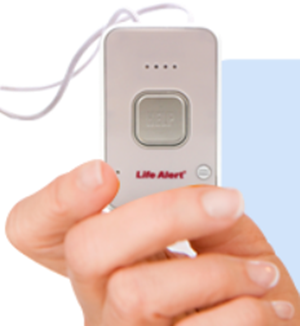

When making the decision between a GPS or an in-home medical alert system, you’ll probably think about your lifestyle, and you’re right to do so. The bracelet looks similar to the wearable fitness trackers so popular these days and feels much like wearing a watch. Plus, the pendant can be tucked into a shirt, if you’d prefer that. The lightweight appeal of the pendant is especially nice people tend not to notice wearing it. In terms of aesthetics, the in-home bracelet and pendant are similar in style to the GPS medical alert device. Once you push the button, someone will stay on the line until help arrives. Whether landline or wireless unit, both in-home systems call the emergency medical technician with the same speed when a mishap occurs and you need emergency help. Whether you purchase the Medical Alert device that is tied to your landline or the version tied to a wireless base unit, your system will call an emergency response team for help at the press of a button.

With a standard medical alert device, you need to be at home to enjoy the security benefits. Yet with this super-light item, disguised as an accessory, you can be tracked wherever you go and have a comfortable sense of safety trailing you.įor instance, if you fall in the parking lot of the gym (did someone say Murphy’s law?), emergency services can find you with a simple push of your medical alert button. The Medical Alert’s GPS-enabled mobile system is a heavyweight in protection but delivered in a lightweight package as a wearable pendant or bracelet.

It’s up to you to choose which one works best for you and how you live. Equipping yourself with a medical alert system offers great protection against falls or other mishaps.


 0 kommentar(er)
0 kommentar(er)
